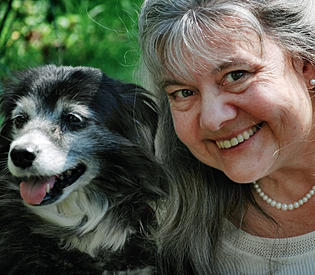Yes, for the most part, it is easier to talk about dogs than codependency. But I created this challenge when I decided to put these two topics together in My Life as a Border Collie.
Last night was more a night for talking about the dogs than for talking about codependency, though frankly I never really know what comes from the many conversations I have been blessed to have with people who stop at my book table and talk – often personally.
With my book table set up right inside the entrance of theBarnes & Noble at Rittenhouse Square in downtown Philadelphia, I was given an excellent place to greet the general public with my big Border Collie book cover poster and copies of the book available for sale. Many people stopped by to talk, drawn in by the book cover poster and by their curiosity about what the book is about.
In such book event situations, people immediately start talking with me about their dogs – stories both happy and sad; stories of love and loss. Some people don’t even want to go further than talking about their dogs. Others do ask about what codependency is and how have I put this all together.
As I explain about codependency and how I have found it similar to the border collie traits, the responses from the general public can range from no response to the topic of codependency to not understanding the concept to interest in this new topic to deep familiarity with it.
It is easy and exciting to talk with the people who are curious and/or familiar with codependency and who readily then tell me their personal stories and often buy the book.
For those who do not join me in the discussion about how this book pours into human lessons not dog lessons, I feel considerably more challenged. For the most part, I simply continue to join them in the dog stories and let go of any efforts to teach what I want them to know. As I said above, I really am not the one who knows what may actually come from our conversations and their opportunities to talk about their pets who they love dearly, as I love Daisy.
But it is also a reminder to me of how hard all of this self-awareness and self-growth can be. If I was just out for an evening to the bookstore for an easy time and the person at the front door was inviting me to learn more about my self, I, too, might just rather talk about dogs.
Though maybe later, in my own private moments, the words spoken at the book table about not letting my strengths become my weaknesses and about creating balance in my care of self and others may come to mind and heart.











.jpg)





%20-%20Screened%20Porch.jpg)



